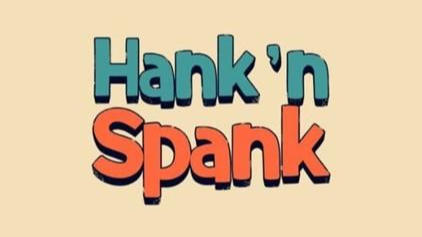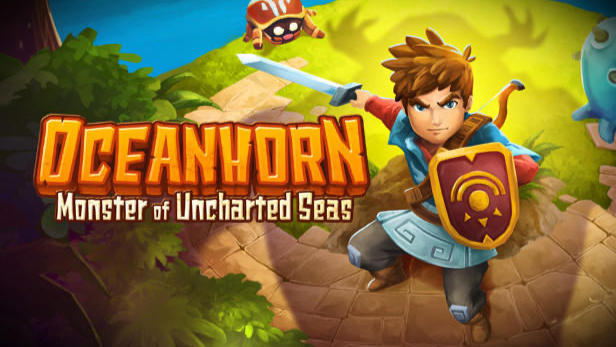Proof That Both Isekai and Gacha Can Be Great - Eroica Review
4K View2022-07-31
In some ways, isekai stories and gacha games share an awful lot in common. They’re both among the most popular genres in their mediums of choice—isekai in manga/anime/light novels, and gacha in mobile gaming. They’re both enjoyed by millions of people. They’ve both spawned huge numbers of clones seeking out a bit of that popularity. And they’re also both equally maligned—both fairly and unfairly—by millions of people who point to them as examples of the worst the mediums have to offer.
What we think of as isekai—certainly the modern wave of it—began in the late ’90s and early ’00s with anime like Digimon: Digital Monsters and .Hack, and it reached fever pitch by the time the Sword Art Online anime series began in 2012. But the storytelling tradition goes back much further than that. If you’re unfamiliar with the term, isekai is a Japanese word that means “another world,” and isekai stories are about characters from one world—often our own modern one—being transported to another world—often a fantasy or video game-esque world—and having to navigate that strange new space.

And one of the latest titles to join this long tradition? That would be Eroica, a free-to-play gacha-based RPG from developer FourThirtyThree. As a game jumping simultaneously into two genres that get a healthy dose of hate, I was extremely curious to discover if it could overcome the negativity surrounding both gacha and isekai. And to my surprise and satisfaction, it largely does.
In Eroica, you take on the role of a young boy named Sei who, in a dialogue-free opening cinematic, appears to be playing some sort of super-high-tech tabletop game. Think of it as what you might imagine Dungeons & Dragons looking like in a hundred years or so, with players, enemy encounters, and so on represented as holograms on a board. But as the cinematic finishes, something seems to go wrong; there’s a bright flash, and the protagonist disappears. When he awakens, he is in an unfamiliar forest, and his memory is completely gone.

While Sei may be unsure of who and where he is, he won’t be alone for long. Soon after arriving in the new world, he meets a princess and her entourage of attendants. And soon after that, the group begins running into monsters running amok and threatening the innocent citizens of this kingdom. Within an hour or so, Sei and his new companions have been made aware of a world-menacing evil that must be stopped by way of a globe-trotting adventure to the far corners of this fantasy land. And perhaps along the way, they’ll learn something about Sei’s mysterious origins and how he ended up here.
So yes, the story is by-the-books isekai mixed with by-the-books Japanese RPG, and it occasionally gets bogged down in the nitty-gritty of the royal family drama and political minutiae of this strange new world—a bizarrely common pitfall of isekai stories for some reason. For the most part, though, Eroica at least keeps the plot moving along at a brisk pace. It’s also bolstered by some fun characters and tons of bonus scenes and dialogue for those looking for deeper backstory.

The only real issue I ran into with the writing in Eroica is that some of it seems broken or unfinished. There were a few instances where I initiated dialogue with an NPC aboard Arkham, the magical train that serves as Sei and crew’s base of operations, only to be greeted with “Story/#000.” Not the most insightful bit of script I’ve ever encountered!
That said, did I mention that there’s a magical train? The first moment where Eroica’s take on isekai really clicked for me was when Sei was introduced to the Arkham. You’re allowed to warp back to this train between stages, and it’s where you’ll handle character management, crafting, summoning new allies from the gacha, and so on. The train itself also has special upgrade paths of its own, and you can even build up a special meter that allows you to summon the Arkham during combat and rain down a shower of missiles onto your enemies. It’s honestly cool as hell.

Outside the whole magical train summoning business, combat in Eroica is also standard fare for the mobile RPG genre, albeit on the more balanced and interesting side of that standard. Battles are turn-based, and your party of four characters has a shared pool of mana crystals. You can choose to spend some of those mana crystals on a special ability, which usually either heals or buffs your teammates or has a chance to debuff enemies in addition to dealing damage, or you can use your regular attack, which will build up one more mana crystal for use later on in the battle.
Add in the usual series of elemental based strengths and weaknesses for characters and baddies, and there’s a totally solid set of battle mechanics. It’s not going to blow anyone away with its inventiveness, but it was engaging enough that I never felt tempted to just switch on “auto” and let the AI handle the fights.

The best parts of Eroica are firmly outside of the fights, however, and it’s a part that most gacha-based RPGs don’t handle nearly as well: exploration. Stages in Eroica are actual levels that you can move through, not just a series of battles bookended by cutscenes as in most gacha games. The levels are simplified sidescrolling affairs, given, but they’re also sprinkled with surprises that made them consistently delightful.
Some levels have little puzzles that you need to solve to progress. Some have hidden paths you can uncover—such as pushing hidden buttons in the right order to get a bookcase to shift aside in a castle—to get some bonus loot or currency to do another gacha pull. And even the most simple forest paths have background elements, like bushes or rock piles, which you can interact with to snag some crafting materials. It’s perhaps a minor addition to the overall mobile gacha RPG formula, but it’s one that worked wonders for me and had me excited to open up each new stage and see what I might find—not to mention spending much longer tapping on everything I could see, just to find out what happens.

Most of those little extra knickknacks and doodads that you’re awarded from exploration are, of course, poured back into Eroica’s endless loop of character development systems. Like any good gacha, this one has tons for you to do to keep making your party stronger. There are at least forty-some characters to unlock (plus more coming, I’d assume), and each of those characters has their own level cap that can be buffed, gear slots to fill up, a huge skill tree to slowly unlock, and—my favorite part—a small but compelling talent system, where you have to choose between two possible talents that offer slightly different buffs or tweaks to that character’s abilities.
It’s a lot to keep track of, but it’s about as coherently presented as anything else I’ve played in the genre. Admittedly, I’m nowhere near Eroica’s endgame, but across the dozens of hours I’ve put in so far, I have yet to hit a point of being baffled about how to best boost my favorite characters or where to focus my time or energy. The game is very good about slowly opening up and clearly directing players toward content that rewards the exact materials needed for each type of progression—XP potions for leveling up new recruits, loot for gearing everyone up and crafting/ascension, runes for unlocking skill tree nodes, and so on.

Really, Eroica’s handling of the gacha game prerequisite bucket of overlapping progression systems is a microcosm of the game as a whole: It’s not necessarily busting down doors and doing anything new or earth-shattering for this style of game, but it handles all the genre norms with a peak level of polish and presentation. Microtransactions are (of course) available, but it doesn’t feel moneygrubbing. In fact, I’ve yet to spend a cent on the game, and my only minor frustration has been my inability to pull one of the rarer light element heroes. It looks good, it plays good, and it tells a fun little adventure story.
The goal of a great isekai narrative is to transport readers alongside the main character to a stunning new world, one that serves as more than simple escapism—one that they truly want to get to know. Gacha games do the same with characters, introducing players to an ever-growing cast that the developers are banking on you growing attached to. In both those respects, Eroica is a success. It has some small technical issues that need to be addressed, but it also has a charming cast full of character, and a great, big world just begging to be explored. If I have my way, I’ll be exploring it for quite some time to come.
SCORE: 4 STARS OUT OF 5
PLAY IF YOU LIKE:
• Sword Art Online. Despite being the king of the isekai anime mountain, Sword Art Online definitely fluctuates wildly in quality from story arc to story arc. That said, if you’ve ever gotten some enjoyment out of the overpowered adventures of Kirito, you’re probably the target audience for Eroica.
• Any of the games from our recent collection of 5 gacha games that won’t just steal your money. Listen, some people hate gacha by its very nature, and I understand. I don’t begrudge anyone their distaste for this type of game and the shady nature its monetization can take on at times. But if you’ve played and enjoyed any of the five games we listed in that article, or if you’re otherwise not opposed to gacha at all times, then you should absolutely give Eroica a shot.
CHECK OUT SOME OTHER RECENT REVIEWS FROM TAPTAP:

Want a Simple Mobile Baseball Game? Then Look No Further - MLB Tap Sports Baseball 2022 Review | TapTap
https://m.taptap.io/post/1608934

When Ghost Hunting is So Boring, You'd Rather Not Hunt Ghosts - Hank'n Spank Review | TapTap
https://m.taptap.io/post/1607467

Can a Video Game Clone Ever Live Up to the Original? - Oceanhorn Review | TapTap
https://m.taptap.io/post/1604787
Comments
TapTap looks better
on the app





Two questions for the developer? Do they know what Ero means and did they realize they named their game almost to the letter after an Adult game on steam?
2022-08-01
I believe it's named after a Beethoven symphony!
2022-08-01
"Proof that both Isekai and Gacha can be great" - Makes passing mention of the gacha in the review leaving out rates, F2P friendliness, alternatives to dupes etc. Yeah, could have left the "gacha" out of the title if you weren't going to show/say why it was good. Though I would hazard a guess that it's because it isn't F2P friendly and doesn't compare to the likes of Blue Archive 100+ free pulls a month, Grimlights 30+ free gacha pulls a month and so on.
2022-08-01
As I said in the review, it does not feel moneygrubbing. I feel like really determining where it ranks compared to other gacha games is hard until you're deep into endgame, but I've sunk dozens of hours in completely F2P and don't feel held back. There's several systems to help you aim for specific heroes over time and such. It feels like an extremely solid gacha system, but I wouldn't feel comfortable saying it's the among the best in the genre quite yet.
2022-08-01
Like it Broooooooooo so cool #2022.
2022-08-01